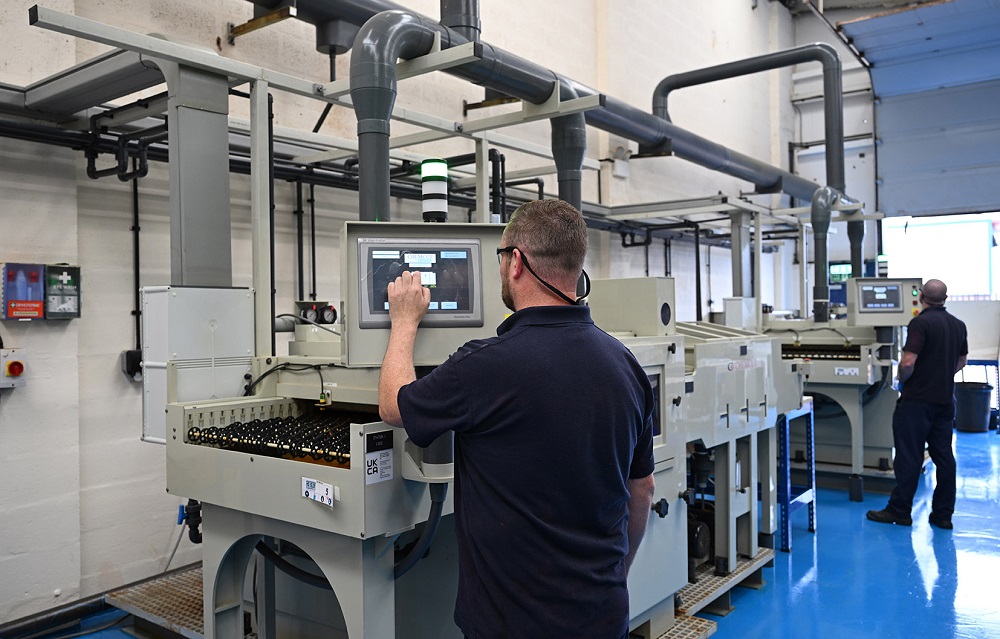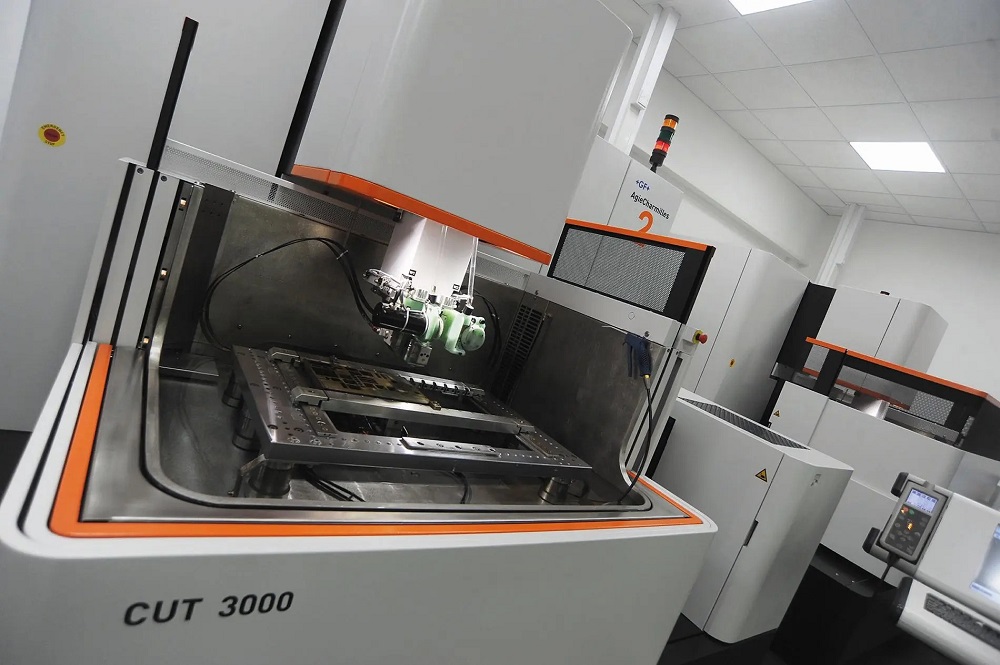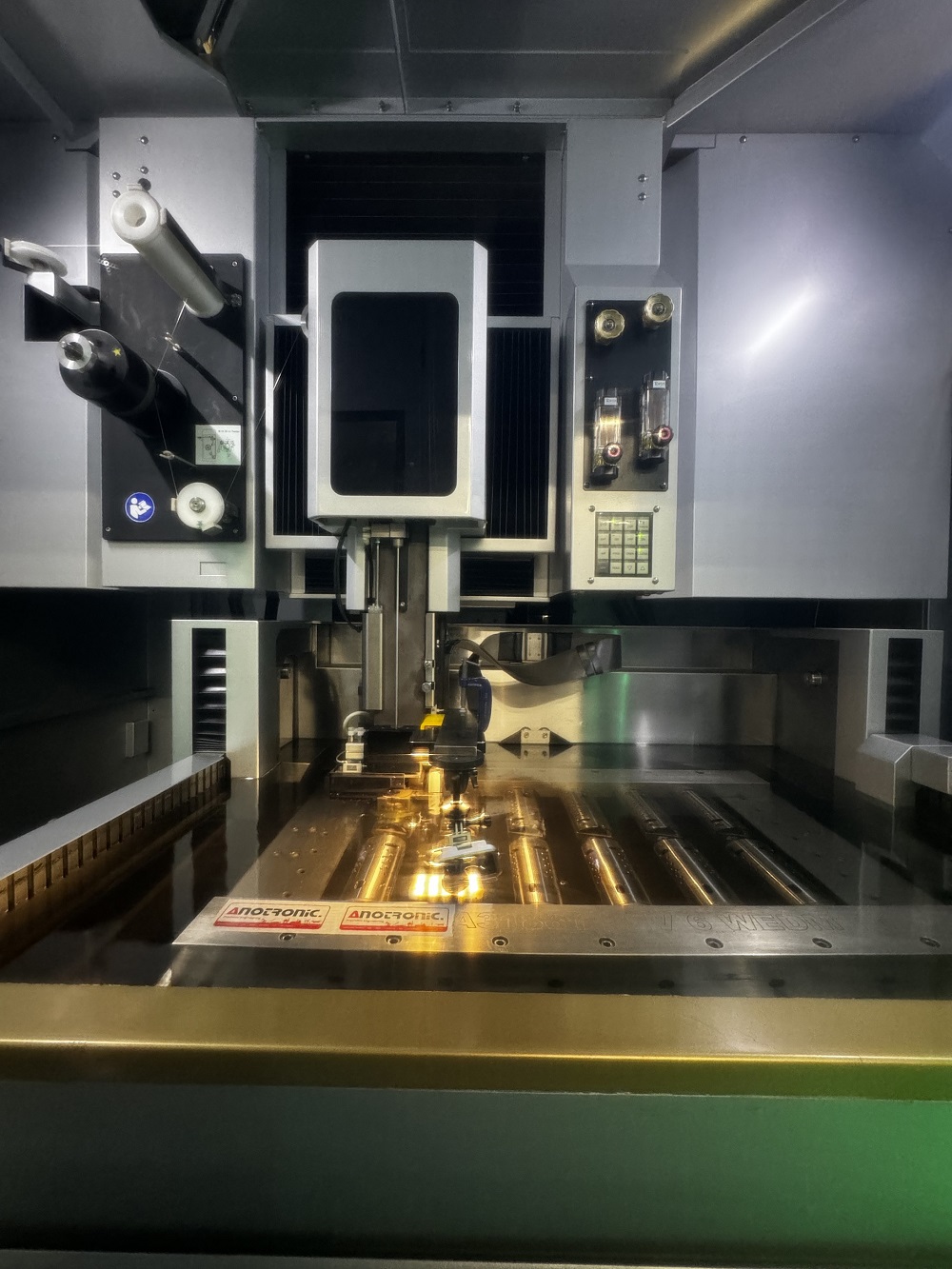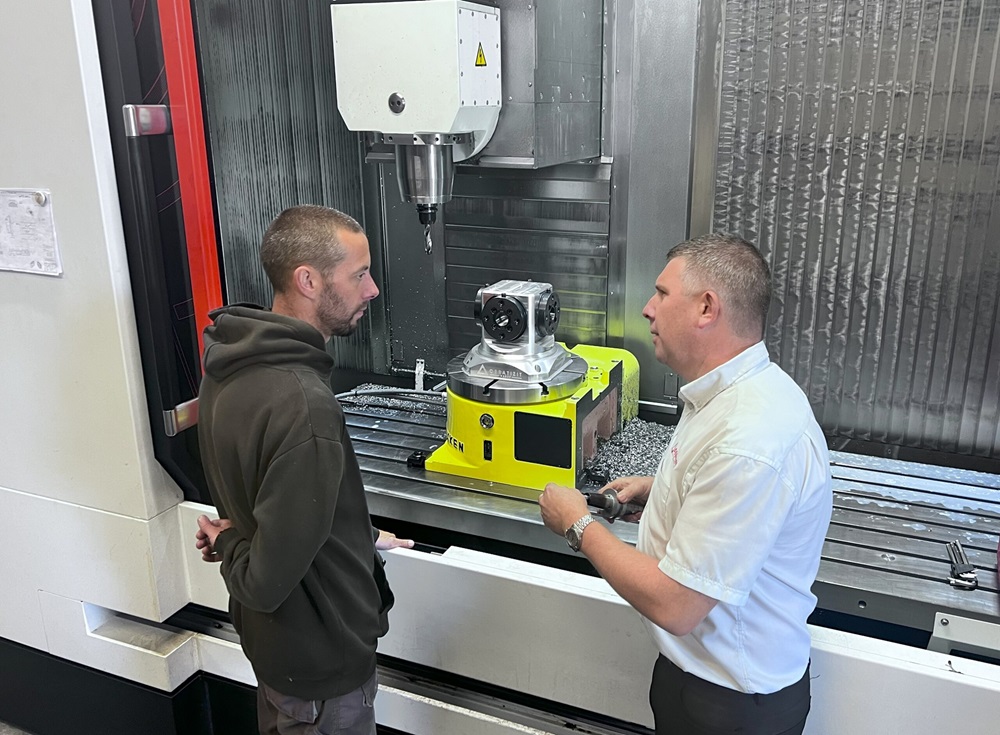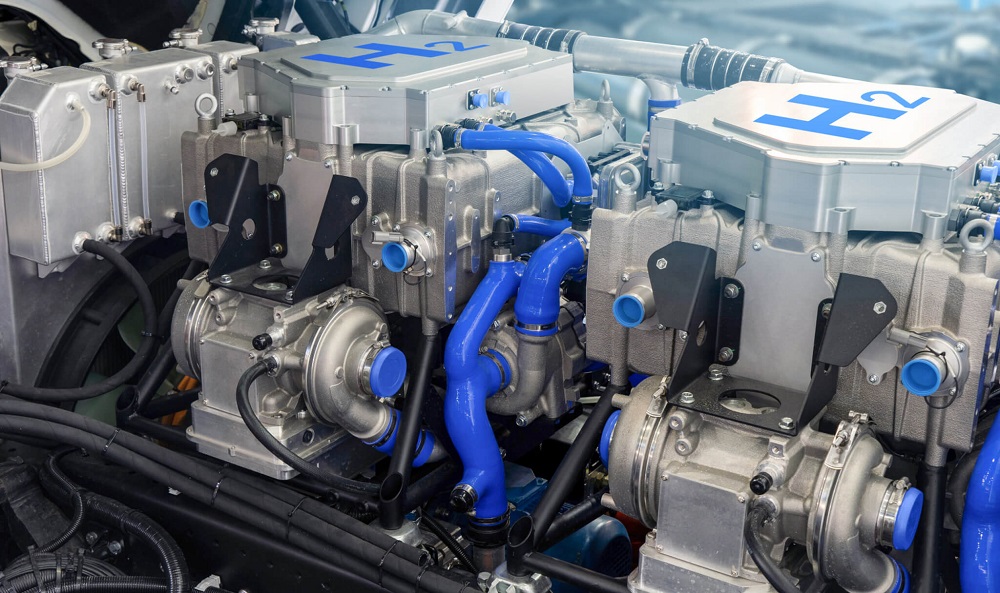Woodbrook Precision, located in Ashton-Under-Lyne, says that Ceratizit has been instrumental in enhancing the productivity of new machine tools.
A recent case in point involved a repeat order for 100-off stainless steel products for an aerospace industry customer. With the job running frequently, Woodbrook set up six vices in a line on the 3.5 m bed of a Mazak five-axis VTC800/30SR. Upon completing each surface and cycle, an operator would reset the job to process the next face. With a total of four operations, the process was laborious. The company engaged with Ceratizit, which made a bespoke work-holding solution at its technical centre and headquarters in Sheffield.
Visiting the Ceratizit stand at the MACH 2024 exhibition in Birmingham, Woodbrook managing director Stephen Hogg realised that the only cost for Ceratizit’s bespoke service was the price of the aluminium tombstone billet and the cost of the four ZSG4-125 Centric vices that connect to the zero-point single riser tombstone system.
Immediately impressed, Woodbrook Precision ordered a pyramid system to clamp smaller parts in its Mazak CV5-500. The ZSG4-125 Centric vices with serrated jaws enabled Woodbrook to clamp on as little as 3 mm of stock, permitting the subcontractor to hit all five sides of the stainless parts with confidence in the high-torque clamping forces of the vice. With five faces machined in a single operation, the following operation was to turn the parts over to complete the sixth surface. This reduced this 100-off repeat job from four operations to just two.
“The job took over one hour per part from start to finish,” explains Hogg. “The tombstone and Centric ZSG vices immediately took more than 10 minutes off each part, with peripheral benefits such as longer running times without operator intervention.”
More information www.ceratizit.com






